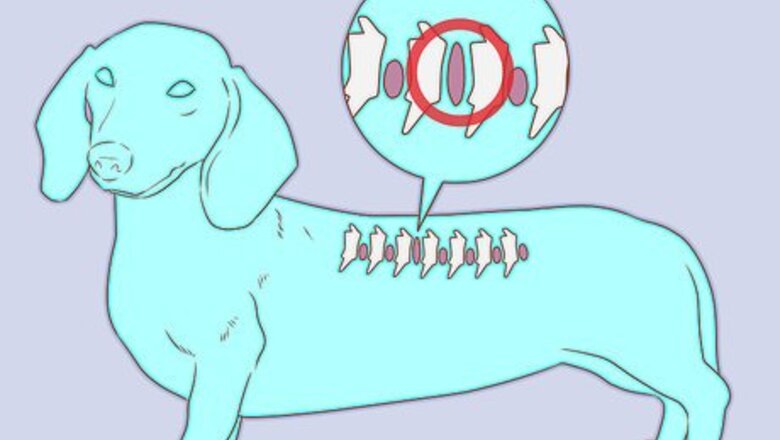
views
Protecting Your Dachshund’s Back
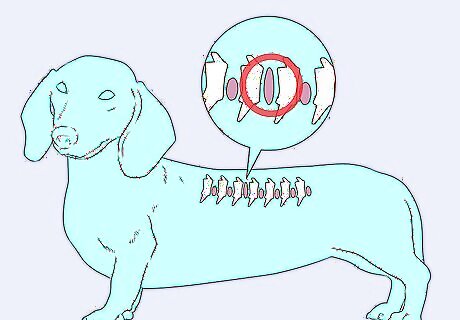
Be aware that dachshunds are prone to intervertebral disc disease (IVDD). Like some other small breeds of dog, dachshunds have a higher risk of developing intervertebral disc disease. In IVDD, the cushioning between your dachshund’s vertebrae bursts or bulges out, which places stress on the vertebrae. IVDD can cause pain, bladder control problems, and even paralysis. To help reduce your dachshund’s risk of developing IVDD, you will need to take certain precautions. You should also know how to recognize the symptoms of IVDD in your dachshund to determine when there may be a problem. Contact your dachshund’s vet immediately if you notice any of the following symptoms: change in activity level, not jumping or running anymore having trouble standing crying out in pain change in behaviour, acting anxious, nervous hunching back and neck and/or tensing back and neck muscles eating less or not at all losing control of bladder and/or bowels
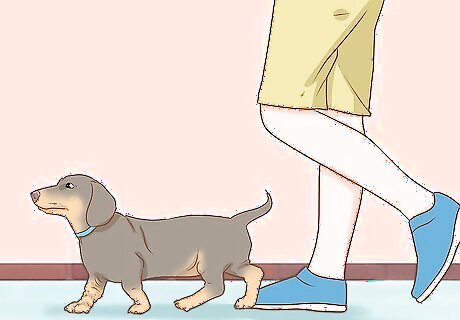
Help your dachshund to maintain a healthy weight. Being overweight will put your dachshund at a much higher risk of developing IVDD, so it is important to feed him right and help him get plenty of exercise. To determine if your dachshund is at a healthy weight, stand over him and look down. If you can see his ribs, he is too thin and needs to gain some weight. If you cannot see his ribs but you can feel them when you touch his sides, then he is a healthy weight. If you cannot see or feel his ribs, he is overweight. Your dachshund should also have a tapered waist rather than a belly that hangs down. Talk to your veterinarian to determine how much weight he needs to lose or gain. Your veterinarian can also tell you how much to feed your dachshund to help him attain and maintain a healthy weight. Walk your dachshund and play with him every day. Give treats in moderation. Consider feeding your dachshund a weight maintenance food if he becomes too heavy.
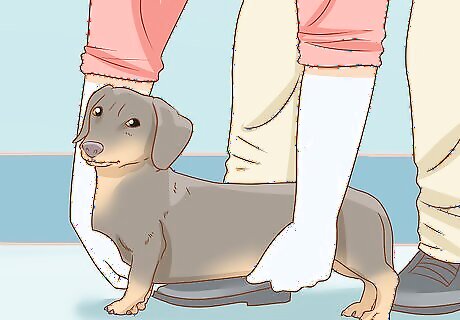
Learn how to hold your dachshund. Holding your dachshund the right way will also help protect his back. To hold your dachshund, support your dachshund’s rear end with one hand and place another hand under his belly to support his back. You may want to practice with something light before you hold your dachshund. Never hold your dachshund with one hand only or by the paws or head.
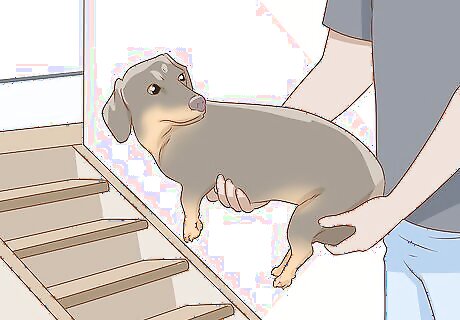
Help your dachshund go up and down stairs. Climbing stairs puts pressure on your dachshund’s back and over time it may cause your dachshund to develop IVDD. Typical stairs are too tall for dachshunds to go up and down without causing stress on their backs. To avoid this problem, always carry your dachshund when you'd like him to come upstairs or downstairs. Put a baby gate up to keep your dachshund from going up and down the stairs. Consider installing ramps for small staircases that your dachshund must go up and down every day.
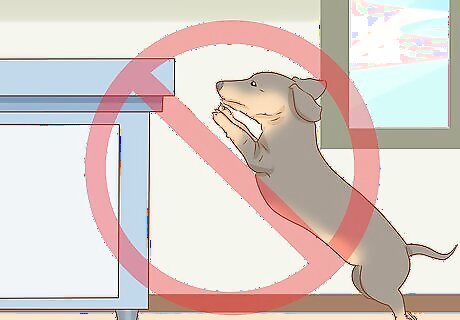
Keep your dachshund from jumping on furniture and other high places. Jumping also puts a significant amount of pressure on your dachshund’s back and may increase his risk of IVDD. To eliminate this risk factor, do not allow your dachshund to jump up on high places such as onto the sofa or your bed. If you want your dachshund to get up on your lap, lift him up yourself. Do not encourage him to jump up. Consider getting some furniture ramps if you want your dachshund to be able to get onto furniture when you are not around.
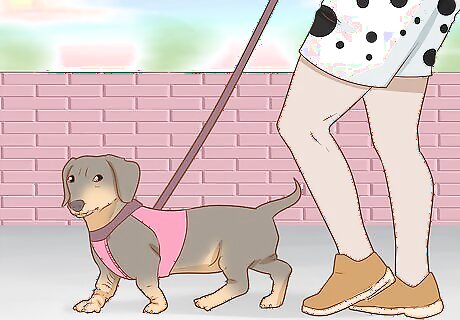
Use a harness to walk your dachshund. If your dachshund tends to pull when you take him for a walk, he is causing extra stress on his vertebrae which may lead to him developing IVDD. Attaching your dachshund’s leash to a harness instead of to his collar will help reduce the stress on his neck and eliminate another factor of IVDD.
Training Your Dachshund
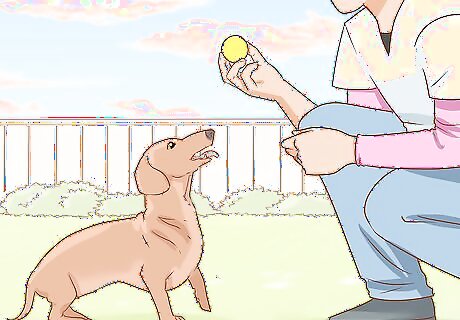
Keep training sessions short. For the best results, train your dachshund during three five minute sessions every day. Keeping training sessions short will help your dachshund to remain attentive. The frequency will help reinforce what you want your dachshund to learn.
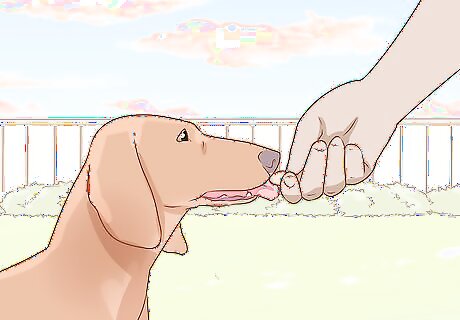
Reward good behavior. In order to get your dachshund to do what you want him to do, you need to reward his good behavior as soon as he does it. For example, if you ask you dachshund to sit and he complies, immediately offer him some praise and petting to let him know that he did something good. You should reward your dachshund whenever he does good things so that he knows that these are the behaviors you like. Find something that your dachshund enjoys and engage in that activity so that your dog learns that doing stuff with you is fun and rewarding, which will make future training much easier.
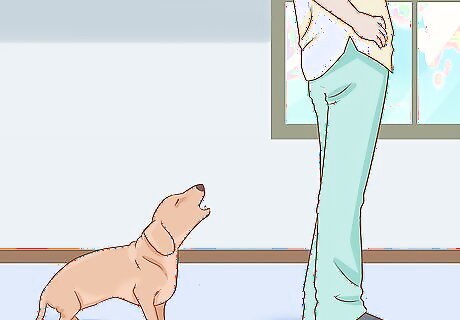
Ignore bad behavior. You help your dachshund to understand what you do not want him to do by simply ignoring the bad behavior or withholding the reward. For example, if your dachshund wants to go for a walk and he is sprinting around the house because he is so excited, ignore him and wait until he stops to put on his harness. When he stops and stands still, put on his harness and take him for a walk. Do this every time you walk your dachshund to help him understand what you do not want him to do. He will learn that running around does not lead to a walk, but standing still does. Avoid using harsh corrections at all costs, as this can damage your relationship with your dog and create further issues down the road.
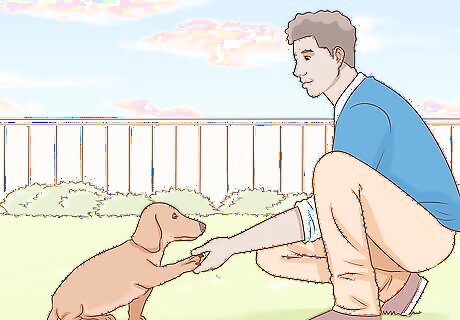
Consider working with a certified professional dog trainer. If you have trouble getting your dachshund to follow your commands, consider hiring someone to help you train your dog. A certified professional dog trainer can help you to train your dachshund. This may be especially helpful if you are struggling to correct bad behaviors. You can also look for group training classes in your area if you’d like to provide some socialization for your dachshund as well. Socializing the dog with other dogs, people, and environments is of extreme importance, as it will make him more comfortable in a range of situations.
Grooming Your Dachshund

Wash your dachshund. Use special dog shampoo to wash your dachshund. If your dog has short hair, you should give your dog a bath once every three months. If your dog has long hair, you may need to bath her more frequently. Use a spray hose and wet all of your dog’s fur, but do not wet the areas around her eyes, ears, and nose. Then massage the shampoo into your dog’s fur. Rinse all of the shampoo out and then dry her off with a towel. Offer your dachshund plenty of praise and a treat after baths to help him to associate bath time with good things.
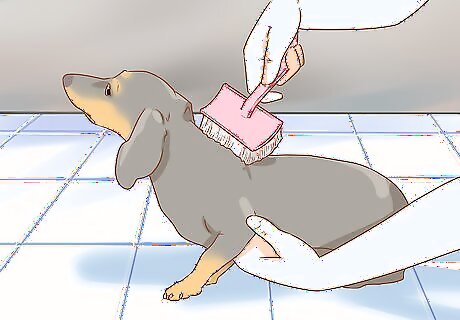
Brush your dachshund. If your dachshund has short hair, you may only need to brush him once a week. If your dachshund has long hair, you will need to brush him daily to avoid tangled and matted fur. Use a wide comb to help remove tangles before moving on to a brush. Make sure that you offer your dog lots of praise while you brush him and give him a treat when you are finished so that he associates brushing with good things.
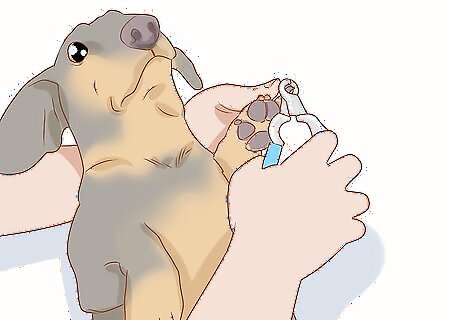
Clip your dog's nails. To clip your dachshund’s nails, you will need a special nail clipper for dogs. You can purchase one in a pet store. You may also need to get your dachshund used to you handling his nails before you try to clip them. If your dachshund is wary of you touching his feet and nails, help him get used to it by petting his feet and touching his toes. Give him praise and a treat when he lets you touch his toes. After he becomes comfortable with you touching his feet, you can try to clip his nails. Make sure that you do not cut too far down or you may hit the quick of his nail. This area is very sensitive and may cause bleeding. If you are concerned about hurting your dog while trimming his nails, ask your vet to show you how or have a professional groomer trim your dog’s nails.
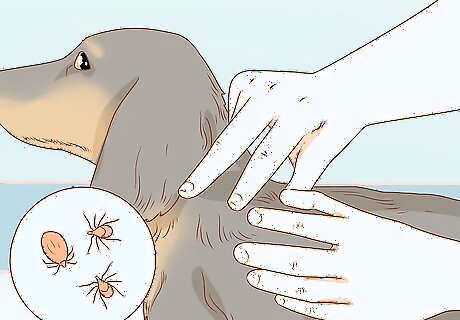
Inspect for problems. Grooming time is a good time to check your dog for fleas, ticks, and other potential health problems. Make sure that you inspect your dog’s skin for any unusual growths, wounds, or tender areas. You should also check your dog’s ears for excessive wax buildup and foul odors. If you find anything that seems abnormal, schedule an appointment with your veterinarian as soon as possible.










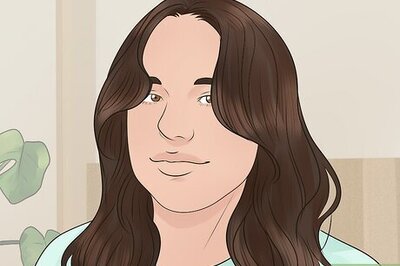



Comments
0 comment